Fashion is a reincarnation. In recent years, the word retro has been frequently mentioned. Retroelements can be easily found in various fashion shows. Then when you see the four elements of retroelements, what kind of classic pictures will appear in your mind? If your impression of vintage is fragmented, let us organize the history of modern woman’s wear. I hope that after reading this article, you will turn the retro elements into new highlights on your outfit, slay the whole street.
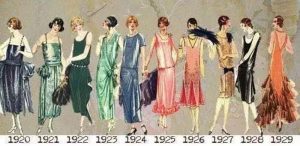
Modern fashion design was formed at the turn of the 19th and 20th centuries. Let’s start with the style of clothing from the next twentieth century. Are you ready to open a wonderful trip for your eyes? Let’s start!
At the 1900 Paris International Fair, the works of fashion designers Charles Frederick Worth and Jacques Doucet attracted most of the attention, but the fashion at the time still followed the Victorian period’s complex and exaggerated hats, shaping the corset and hip pads. Out of the hourglass shape.
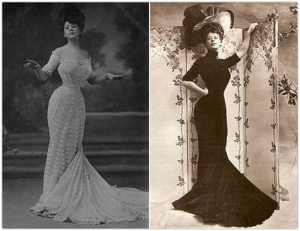
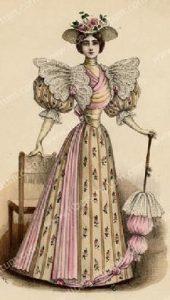
The 1910s
Keywords: Orientalism, gorgeous, high waistline
Before the 20th century, there was no “fashion” of modern significance, and there was no “fashion designer” of modern significance. At that time, the style and trend of clothing were influenced by the wearing of European and American aristocrats, and the costumes of these nobles were from the hands of tailors.
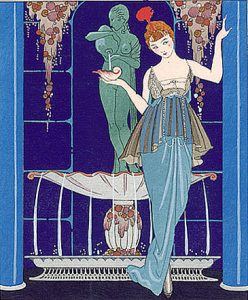
Paul Poiret maybe is the first person in fashion design in the world. At that time, Poiret’s slogan “liberation of women from the dictatorial monopoly of corsets” became the horn of the fashion revolution, inspiring designers and inspiring women, giving them a new perspective and proposition for fashion. There are many qualitative changes in the skirt, the corset loses its meaning, and the heavy skirts are gone. The women’s clothing draws on the traditional clothing elements of Persian, Japanese, Indian and other eastern countries, and designs a series of loose and easy-going. The style of clothing removes women completely from the S-shaped shape.
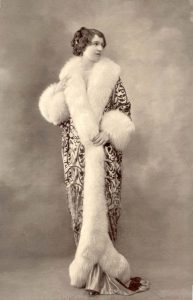
In the costumes designed by Poiret, we are always faintly able to find traces of ancient Roman robes, Japanese kimonos, Chinese cheongsams, Arab dresses, Indian saris, rich and exotic affluence.
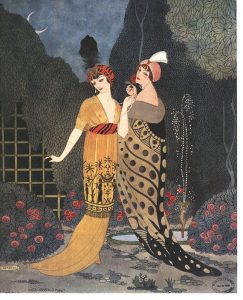
Based on these exotic elements, he made the clothes loose and simple, moved the support points of the clothes to the shoulders, and creatively designed the bras, one-shoulder pajamas and bloomers.
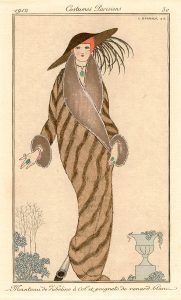
In 1912, Poiret designed an extreme skirt, which is the famous hobble skirt. The skirt has a narrow hem, and the skirt is long and the hips are wide and oblique, making the skirt unable to Take a three-inch walk. The fashionable woman does not hesitate to tie her legs with the cloth to adapt to this embarrassing fashion. Although this style is inconvenient to walk, because of its simple and clear shape, and just suitable for the tango dance from South America, it is popular. For a while. Poiret changed the European clothing whose curves ruled for hundreds of years, regaining the dominant position of the line, thus opening the prototype of the 20th-century modern molding line.
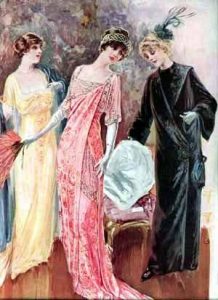
The V-neck was the popular neckline in the second half of the 1910s. By 1918, the clothes became straighter, more curved, and the waistline was high (just below the bust), echoing the Empire or the Renault style of the early 19th century.
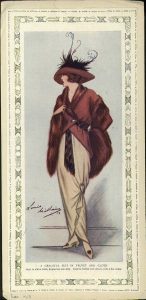
The 1920s
Keywords: boyish, modern girl, straight silhouette, low waist short skirt,
bangs, short hair, bell cap
After the First World War, the United States entered a prosperous era as a result of its role in the war and came out on the world stage. In the optimism brought about by the end of the war and the booming stock market, social customs and morality have been relaxed. The focus of clothing in the 1920s began to move down. Compared with the high waist style of the 1910s, the waist position in the 1920s was lower and looser. Most of the women in the time are Bob short hair, wearing a calf dress.
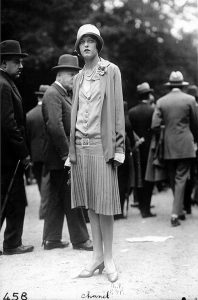
During this period, Coco Chanel dominated the trend, and knit knee skirts, two-tone shoes, and little black dresses all appeared at this time.
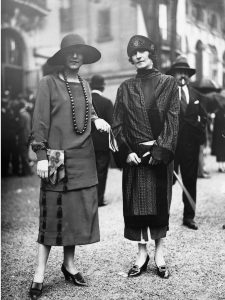
The simple hat replaced the complicated decoration and became the mainstream of this period.
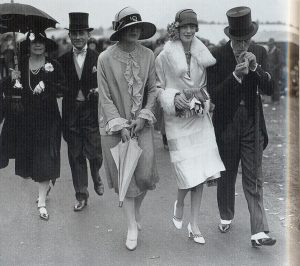
The technological development of new fabrics and new ways of fastening garments have influenced the fashion of the 1920s, the emergence of rayon. Expensive fabrics, including silk, velvet, and satin, are favored by high-end designers.
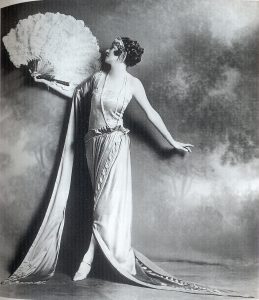
Jeane Lanvin’s designs are smashed with intricate decorations, embroidered lace, and light, clear beading. The 1974 and 2012 films “The Great Gatsby” reproduce the fashion trend of this period.
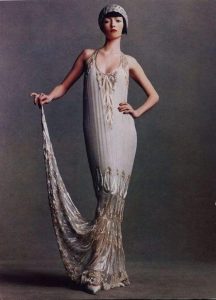
Jean Patou designs sportswear, knit swimsuits and tennis skirts for women.
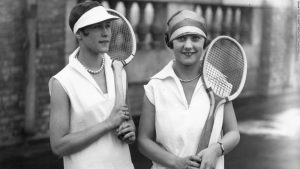
Underwear began to transform after the First World War to meet the flatter chest and more boyish ideals. The female image is liberated from the restrictive corset and the newly popular boyhood is achieved through the use of a chest corset.
Film:”The Great Gatsby”
The 1930s
Keywords: open back dress, waistline return to normal, nylon socks, hand-pushing hairstyle, delicate embroidery, sexy oblique cut, shoulder pad
In the 1930s, the most famous period of the Great Depression of the World Economy. The more conservative fashion style replaced the 1920s. For women, the skirt becomes longer and the waistline returns to its normal position.
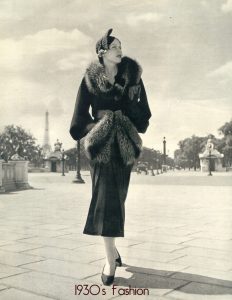
The smooth and portable silhouette is replaced by a softer, more feminine silhouette. From the overall perspective, the slim waist is resurrected, the curve is emphasized, and the waistline returns to its natural position. However, it was not the hard lining of the Napoleonic Empire and the resurrection of the bee-waist and the resurrection of the extreme corset. The extremely thin waist of the corset and the exaggeration of the volume of the skirt have disappeared, and the pursuit of more functional simple clothing. In nightdresses and other aspects, the extremely open back vest and chest dress are also very popular.
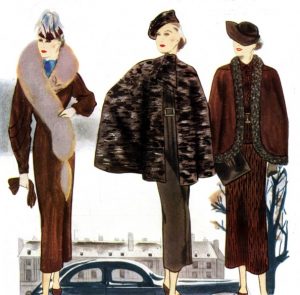
Madeleine Vionnet, a famous designer of the 30th century, invented the famous “oblique method”, Vionnet’s skirt ancient Greek-style drape beauty and architectural delicate structure brought her The title of “The Queen of the Oblique” and the “Architect of the Apparel Industry”.
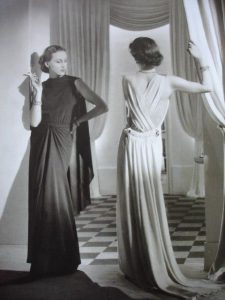
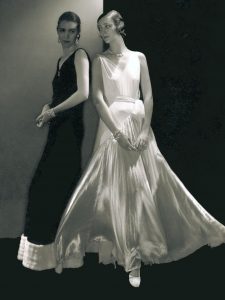
Elsa Schiaparelli was also the designer of the 1930s, the first to incorporate painting in fashion, the first designer to use zippers and shoulder pads.
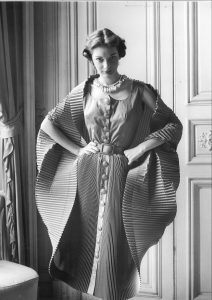
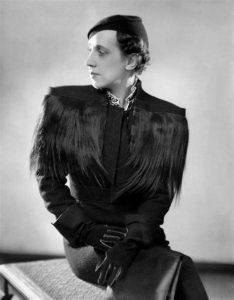
Movie recommendation:”Untitled Downton Abbey Project” ,it covers the style of clothing from the 10th to 30th
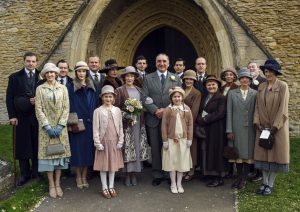
The 1940s
Keywords: uniform and military uniform, blouse, beret, Dior “New Look”
After the Second World War, a cold war situation with a stalemate of 40 years was represented by the Soviet Union and the United States. The exchanges between the East and the West were interrupted and the international situation was very tense. In the face of such a situation, people who have suffered from war are eager for peace. Under this circumstance, Chris Dior seized the opportunity of the times and the wishes of the people with a keen sense, and timely launched a new style of clothing to meet people’s needs.
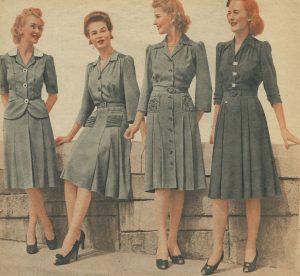
Military trench coat
On February 12, 1947, the first works of the Dior fashion store, which was just founded, was held as scheduled. Dior’s work has made people shine, and the high fashion industry in Paris has also taken the opportunity to re-establish the prestige. At the same time, the world has declared the end of the male form of the women’s uniform and shoulder pads in the war.
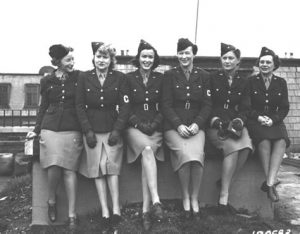
Dior “New Look”
Dior’s new style is “Corolla” (corolla), which is also called 8-shaped because of its shape resembling 8 characters. In fact, this new style is a retro-styled style, from the modern version of the basic style of the female curves that emphasize the chest, waist and hip trinity in the Western European women’s wear since the 16th century.
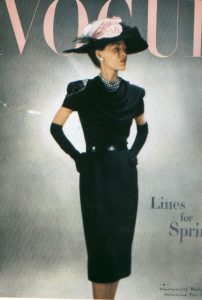
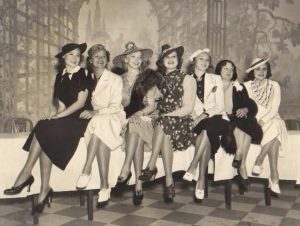
The film “Malèna” reproduces the style of clothing of this period.
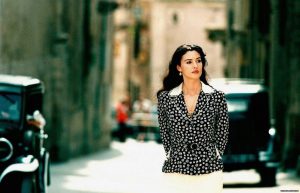
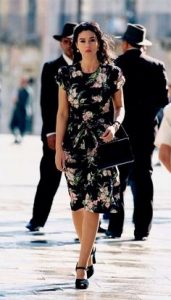
The 1950s
Keywords: high heels, straight skirt, brilliant colors
Givenchy is the first designer to collaborate with movie star Auntie Hepburn. He made the little black dress famous and introduced a combination of fashion.
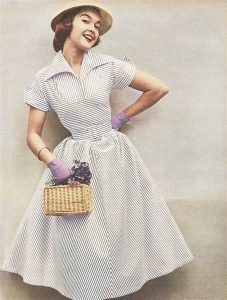
Cristobal Balenciaga brings us a balloon skirt, a tunic dress, a waistless dress, and a high waist cut just below the chest.
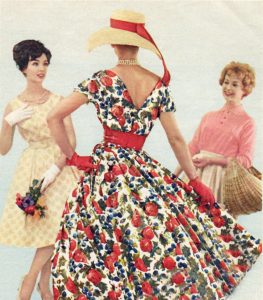
Movie recommendation: Audrey Hepburn “Funny Face”
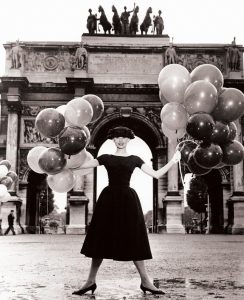




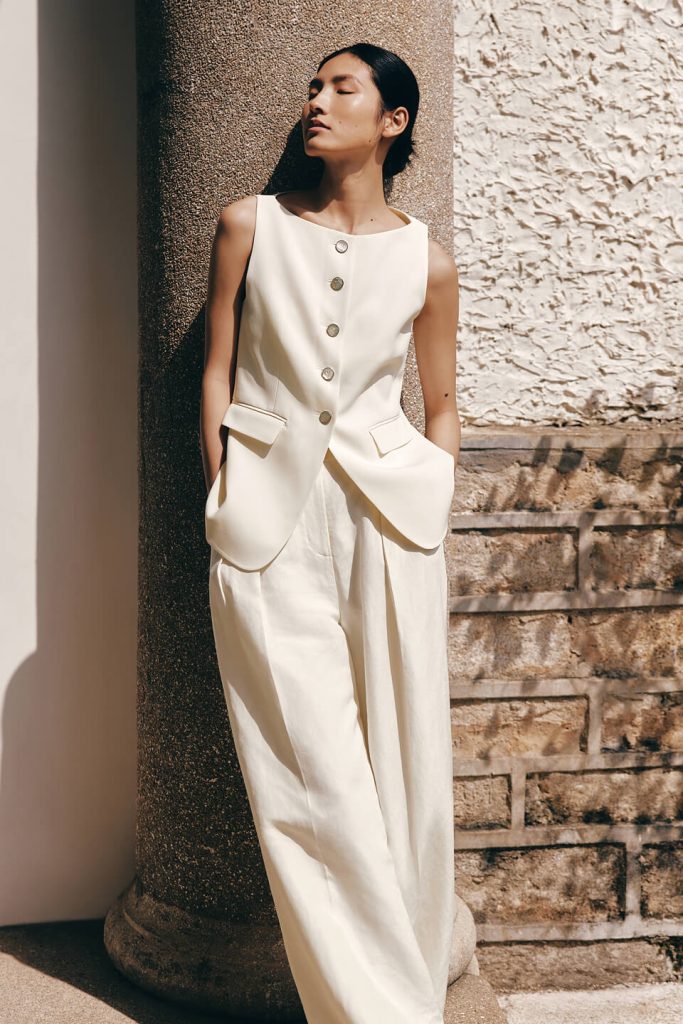
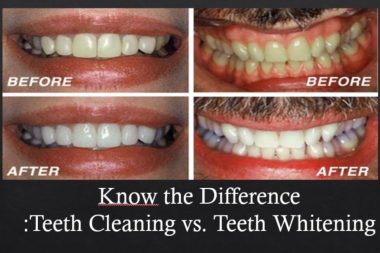

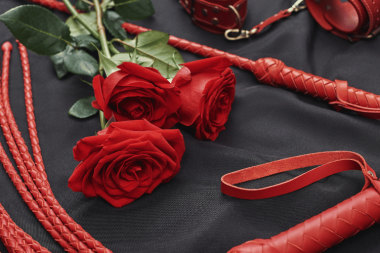


Leave a Reply